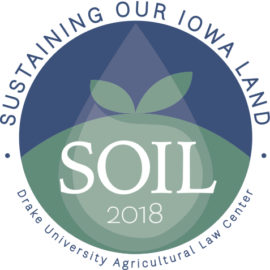Updated on March 29, 2018
Don’t mess with SNAP
In the 1980s, my brother, sister, and I participated in a federal nutrition program. My parents scrambled to continue to farm. Our bank had failed. The family was in crisis. I assumed I’d have to sell my horse and mule and move with my family to some far-off city. Fortunately for my family, the Grapes of Wrath-type scenarios didn’t happen.
For numerous reasons, many of them stemming from farm bill policies, my family’s farm survived the 1980s farm crisis. Today, my brother and sister-in-law are farming with my parents on the farm where I grew up. My husband and I own and operate our own farm.
One of the things that made a real difference for my family during the 1980s farm crisis was free school lunch. Over the few years we participated, those free lunches freed up a couple thousand dollars. My family spent that money on non-food necessities and much of it at local stores.
I’ll always remember our superintendent who encouraged families to sign up for free lunch. He said participate—it helps your family and also benefits the school. His reasoning was something about a reimbursement formula. A lot of families from my hometown applied and used the program because we were all told it was the right thing to do. It was, and it still is.
Fast forward to 2018. President Trump’s budget includes a radical proposal to remake the Supplemental Nutrition Assistance Program (SNAP), what used to be known as the food stamp program. Termed “America’s Harvest Box,” the program would cut roughly half of SNAP dollars and replace them with a box of shelf-stable foods delivered to individuals and families participating in SNAP. Secretary of Agriculture Sonny Perdue is now vigorously defending this proposal.
The Harvest Box contrasts the innovations in the SNAP program from the 2014 farm bill designed to incentivize eating more fruits and vegetables. Our farm participates in Iowa’s Double Up Food Bucks to encourage SNAP participants to purchase fresh fruits and vegetables from local farmers. The “Harvest Box” would remove the ability of SNAP beneficiaries to choose. They lose the opportunity to select healthier foods, purchase from farmers and retailers in their local community, and decide when and where to use the benefit as they need. In lieu of the flexibility, SNAP families and individuals would see those opportunities slashed and replaced by a box of “shelf-stable milk, juice, grains, ready-eat cereals, pasta, peanut butter, beans, canned meat, poultry or fish, and canned fruits and vegetables”.
Neil Hamilton, director of the Agricultural Law Center, was a guest earlier this week on Iowa Public Radio’s River to River. The hour-long program explored the history of SNAP and implications of implementing America’s Harvest Box. Neil argued this proposed change to SNAP looks like a solution in search of a problem.
Kathie Obradovich devoted her political column in Monday’s Des Moines Register to the Harvest Box. She claimed the proposal, if implemented, would have a spiraling downward effect on Iowa’s economy. Food prices would rise, Iowa retail sales would drop, and federal farm programs on which Iowa farmers depend would lose support.
To be fair, some of her criticism was sardonic. She said, “Everything I’ve read suggests Congress has as much interest in the Harvest Box as the average 5-year-old has in canned spinach.”
However, by mid-week, Politico’s Morning Ag reported that Secretary Perdue “has a message for all the ‘America’s Harvest Box’ haters: We’re serious. So serious that Perdue tells POLITICO that House Agriculture Committee Chairman Mike Conaway is open to considering a small-scale pilot of the program in the 2018 farm bill.”
As the politics of the policy development around the Harvest Box play out, there’s a very important message farmers need be sending to SNAP participants.
Thank you for using SNAP to help your family, for spending those benefits in your communities, and for responding to our commodity marketing campaigns by purchasing the food we raise such as our beef, milk, pork, poultry, produce, and grains.
For over half a century political forces interested in making sure all Americans have enough to eat and political forces interested in making sure American farmers are economically able to grow that food have joined forces in federal farm policy. These proposed changes to SNAP threaten a coalition of urban and rural lawmakers working together to insure both goals.
My participation in a federal nutrition program is more the norm than the exception. They are well-directed, efficient, good for families and local communities, and an excellent tool for helping families navigate a crisis like mine did. Federal nutrition programs also provide effective and efficient services to those with chronic needs like the disabled and elderly. America’s Harvest Box seems to fall short on every measure of good government. But maybe that’s the real point of the proposal: to undermine the effectiveness of a good government program.
As a farmer, when the going gets tough, I have depended on government programs. They’ve helped me throughout my entire life, from free school lunches as a farm boy in the 1980s to the Livestock Forage Program (LFP) during the Iowa drought last summer. As a farmer, I am well served standing with fellow Americans using SNAP. As a farmer, I must not stay silent while political forces redesign one of the most popular and efficient government programs to become less effective and less beneficial to the people it is supposed to serve.




